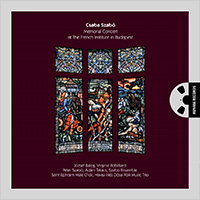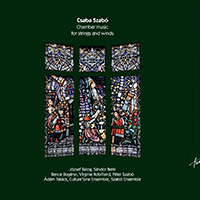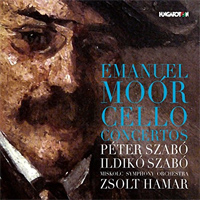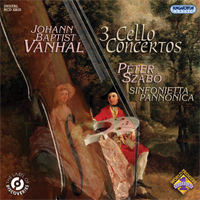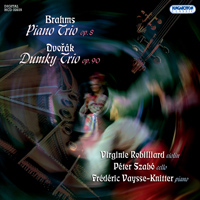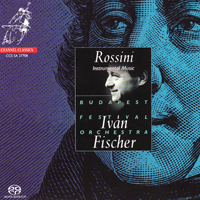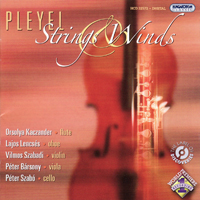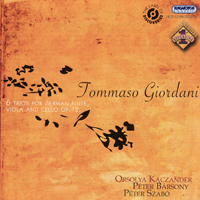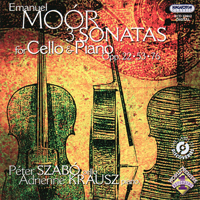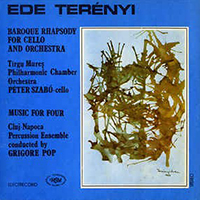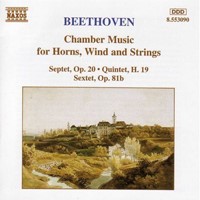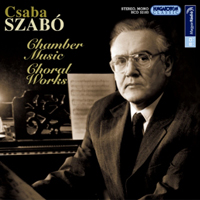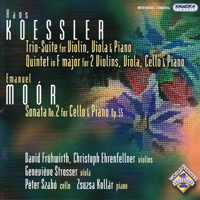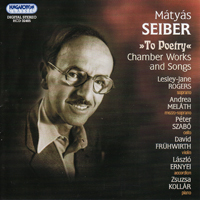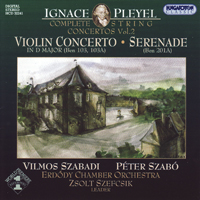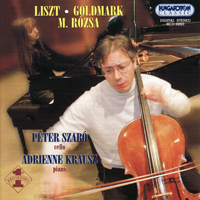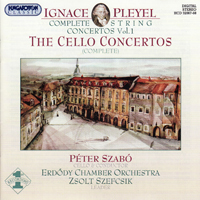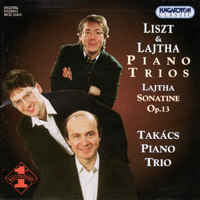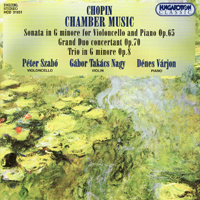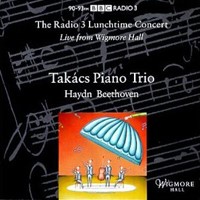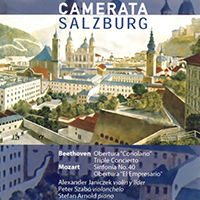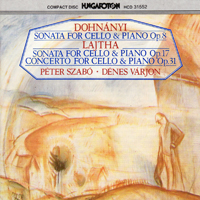Pleyel: String And Winds
Kaczander, Lencsés, Szabadi, Bársony, Szabó
Musical and assured, with a hint of roughness suggesting rustic vitality.
While we'd all be the poorer without the music of Mozart, his genius has tended to obscure the lovely and ingratiating works of his less towering contemporaries. Thus, the warm, lyrical woodwind concertos of Cimarosa and the exuberant ones of Krommer have rather been overshadowed by Mozart's jewel-like masterpieces of the genre. Similarly, these chamber works by Ignaz Pleyel, a student of Haydn's and a Kapellmeister in Strasbourg, don't deserve their comparative neglect by the side of Mozart's charming wind-and-string ensembles.
The techniques by which Pleyel expands the variety of sonorities available from these small instrumental groupings are ingenious. Here and there, the violin supports the flute in thirds, as if to suggest a wind duet; in the oboe works the pattern occasionally reverses, with the oboe beneath the violin, losing the wind-duet illusion but still enriching the texture. In the E-flat quintet, when the violin briefly takes the lead line, symphonic-style, the flute and oboe line up above the two lower strings for accompanying chords, simulating another standard orchestral effect. Mozart's quartets and quintets make use of such devices as well, I'm sure, but their seamless musical fabric - they might as well have sprung forth, full-blown, from the head of Zeus - seems almost to defy analysis; it's easier to hear this sort of thing in the scores of a capable craftsman like Pleyel.
The two oboe quartets are the strongest pieces here. The leisurely, dignified 2/4 theme of Ben 391's Andante ma non troppo con variazioni suggests some of Haydn's own slow movements. The oboe embellishes and comments on the theme in the lyrical variations, interspersed with busy, cheerful ones, as well as a plaintive episode at 4:32. Even more impressive is Ben 394; its longer themes, more elaborately worked out, produce a work comparable in scale to Mozart's own chamber scores.
The flute quartet is pleasant, if less distinguished. The opening Allegro molto is buoyant; the Adagio is another duple-meter slow movement, but this one sounds square. In the chipper closing Rondo, the occasional doubling of flute and violin, symphonic-style, seems a waste with only four instruments available, but their deployment in high thirds at 3:14 makes a nice effect.
The quintet for flute, oboe, and strings faces the inherent problem that the two woodwind instruments function best in different ranges - note that Mozart never attempted such a combination - so when they're trotting along together in the midrange, the flute is inevitably at a disadvantage. There's a nice passage in the exposition of the Allegro vivace - here the second movement, following an opening Adagio - where the two woodwinds trade off segments of a phrase lying in their respective strong ranges, to excellent effect.
The playing is lovely. Lajos Lencsés has an attractive oboe tone, crisp and focused in the perky staccatos, vibrant and flowing in the long singing phrases. Flutist Orsolya Kaczander produces a clear if not shiny sound; it's hardly her fault that Pleyel's long lines don't soar in the Mozart manner. The strings are musical and assured, with just a hint of roughness suggesting a rustic vitality.
The recorded sound is dryish, but pleasing.
Stephen Francis Vasta
Source: www.musicweb-international.com
MusicWeb International
November 2009


